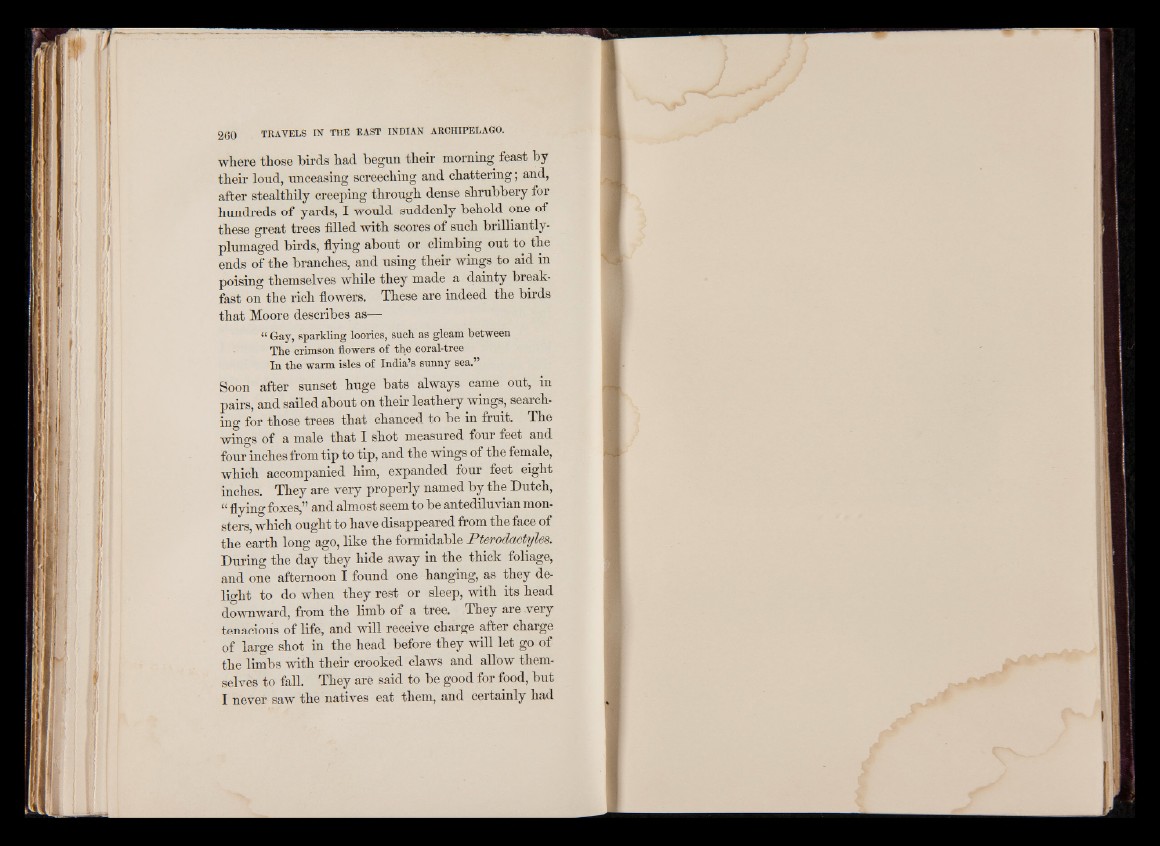
where those birds had begun their morning feast by
their loud, unceasing screeching and chattering; and,
after stealthily creeping through dense shrubbery for
hundreds of yards, I would suddenly behold one of
these great trees filled with scores of such brilliantly-
plumaged birds, flying about or climbing out to the
ends of the branches, and using their wings to aid in
poising themselves while they made a dainty breakfast
on the rich flowers. These are indeed the birds
that Moore describes as—
“ Gay, Rparkling loories, such as gleam between
The crimson flowers of the coral-tree
In the warm isles of India’s sunny sea.”
Soon after sunset huge bats always came out, in
pairs, and sailed about on their leathery wings, searching
for those trees that chanced to be in fruit. The
wings of a male that X shot measured four feet and
four inches from tip to tip, and the wings of the female,
which accompanied him, expanded four feet eight
inches. They are very properly named by the Dutch,
« flying foxes,” and almost seem to be antediluvian monsters,
which ought to have disappeared from the face of
the earth long ago, like the formidable Pterodactyles.
During the day they hide away in the thick foliage,
and one afternoon I found one hanging, as they delight
to do when they rest or sleep, with its head
downward, from the limb of a tree. They are very
tenacious of life, and will receive charge after charge
of large shot in the head before they will let go of
the limbs with their crooked claws and allow themselves
to fall. They are said to be good for food, but
I never saw the natives eat them, and certainly had